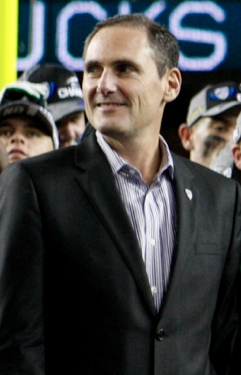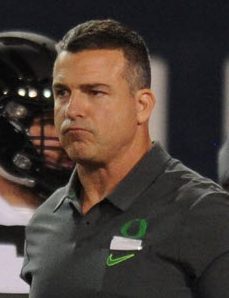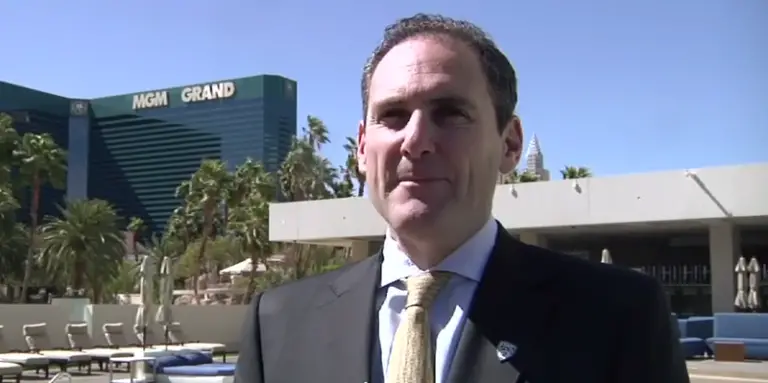Part 1 of 2
With writers at The Oregonian, San Jose Mercury News, and Fishduck’s own Ryan Robertson having all recently sounded alarm bells on the state of the Pac-12, I will attempt to compress all of the madness into a concise and easy to digest two-part read. Part-two will be published on December 21st.
Darren Perkins
—————————————————————————————–
The Pac-12 Conference is in trouble. Trouble of falling further and further behind the rest of the Power 5 conferences in the most important sport of all, football. Football, along with Men’s Basketball, generates the necessary revenue to pay for the other non-revenue sports. These two sports also go a long way in defining a university’s culture and identity.
The “Conference of Champions” has won more than twice as many titles as the next closest conference, but it has been predominately in sports such as cross country, track and field, gymnastics, baseball, and volleyball. In recent history, football championships have been few and far between, and last year’s 1-8 bowl record brought the conference’s troubles to the forefront.

Don’t blame the AD’s for the revenue disparity, blame the university presidents.
Pac-12 fans should be on alert, for if this recent trend continues, the conference could get left behind, with the Power 5 possibly evolving into the “Super-4.”
The Money Problem: Revenue and Expenses
Business 101: “Maximize revenue, minimize expenses.”
A) REVENUE
The Pac-12 under Larry Scott has turned the above fundamental principle on its head. Outspending Power 5 counterparts in areas that many find unnecessary, frivolous, and at times flat-out extravagant. It’s no secret amongst the Pac-12 brass that Larry Scott likes live, work, and play at a first-class expense. The problem is, at the same time, he is not generating the same type of revenue as his peers.
The Pac-12’s choice to run its own network and lock into early distribution agreements has left the conference on the sidelines as others negotiated lucrative television rights deals and digital rights fees. Further, the lack of an agreement with Direct TV is viewed as a massive miscalculation.
(We’ll focus our comparison against the SEC and Big Ten, the other two conferences with a television network.)
Annual Revenue Distribution per School
SEC: $41 million
Big Ten: $37 million
Pac-12: $31 million
B) EXPENSES
Expense 1: Conference Headquarters Annual Rent
SEC: $318,000
Big Ten: $1.5 million
Pac-12: $6.9 million (while also carrying $11.7 million in deferred rent)
A major complaint among Scott’s critics is his knack for needing everything to be of the lavish variety, which has earned him the nickname “Champagne Larry.” Shortly after he took over as then-Pac-10 Commissioner, he moved the headquarters from a reasonably priced San Francisco suburb to ultra-expensive downtown San Francisco, which ranks as one of the highest rent areas in the country.
Scott’s reason for picking such an expensive location is the synergy that it creates being located alongside some of the top media and technology companies in the world, and the potential partnerships this could create. Also, as the Pac-12 owns and operates its own television network, the Pac-12 isn’t just a collegiate athletic conference, but a media company as well, which requires much more square footage and more employees.

Pac-12 Commissioner Larry Scott
The SEC and Big Ten sell their media rights but aren’t in the media-production business. The Pac-12 offices include 90,000 of square footage dedicated to studios, production bays, control rooms and a host of directors, technicians, equipment and talent.
All of this would be fine and dandy if the revenues offset the expenses and then some. But clearly that is not the case. To put it simply, the media company division of the Pac-12 is dragging it down.
Expense 2: Travel Expenses
SEC: $788,000
Big 10: $542,000
Pac-12: $3.1 million
The scale of this disparity is shocking. Again, Scott would point to the extra travel expenses as a result of the Pac-12 being the only conference to run its own television network, but wouldn’t necessarily mention his penchant for private jets and top-shelf tendencies. While it’s not necessarily expected that he be as down to earth as his predecessor (and known commercial flight customer) Tom Hansen, you would think Scott would realize that the optics are not in his favor.
Expense 3: Commissioner Salaries
Larry Scott, Pac-12: $4.8 million
Jim Delany, Big Ten: $2.4 million
Greg Sankey, SEC $1.9 million
Commissioner plus Top five Lieutenants
Pac-12: $8.4 million
Big Ten: $4 million
SEC: $3.9 million
Supporters would argue that the higher salary is because Scott really has two jobs, one is running the Pac-12, and the other is running the Pac-12 “media company.” It would appear he is not performing well in either role.
The conference presidents, known as the Pac-12 CEO Group, are the folks whom Scott answers to. They are his bosses and they alone approve his salary. They are not holding him accountable, and thus they are similarly not doing their job.
How the Money Problem Translates on the Ground Level

Coach Mario Cristobal makes roughly and average amount in the lowest paying conference. Some would say the Ducks under performed in 2018.
Average Coaching Salaries (in millions)
SEC: $4.64
Big Ten: $4.3
Big 12: $3.96
ACC: $3.41
Pac-12: $2.85
The Pac-12’s next round of media rights negotiations is in 2024. In that time, each SEC member stands to receive $10 million more annually from its conference than Pac-12 members. That’s a minimum difference of $60 million dollars over the next six years.
The sobering fact is that the Pac-12 is getting destroyed in the revenue game; in the meantime, it would seem necessary that some unnecessary spending by Champagne Larry should be cut. What if the conference could distribute even an extra $500,000 per year to each member?
Half of a million doesn’t’ seem like much these days. But it could be the difference between a program getting a top coordinator, extra strength and conditioning coaches, a better nutrition program, a better weight room, etc., etc. … in other words, it could be the difference between putting a better product on the field, the difference between winning and losing. A 1-8 bowl record doesn’t lie.
Now, imagine what several million dollars could do …
(This was part-one of a two-part report on the Pac-12. Part-two will publish December 19th.)
Darren Perkins
Spokane, WA
Top photo credit: From Video
 Spencer Thomas, the FishDuck.com Volunteer Editor for this article, is an attorney for the Social Security Administration in Atlanta, Georgia, and coaches High School Football for Hillgrove HS in Powder Springs, GA.
Spencer Thomas, the FishDuck.com Volunteer Editor for this article, is an attorney for the Social Security Administration in Atlanta, Georgia, and coaches High School Football for Hillgrove HS in Powder Springs, GA.
Related Articles:
Oregon Enters Playoffs Better Off Than Last Year
Will The Coaching Carousel Kill Oregon's CFP Chances?
The Playoff Formula Hasn't Changed
Oregon Aims to Bury Dawgs, Punch Playoff Ticket in Rivalry Clash
Huskies Are the New Beavers, Stay In Your Lane Kiffin, and the Civil Apple Cup War
Oregon Football: The X-Factor Vs. Washington
Darren Perkins is a sales professional and 1997 Oregon graduate. After finishing school, he escaped the rain and moved to sunny Southern California where he studied screenwriting for two years at UCLA. Darren grew up in Eugene and in 1980, at the tender age of five, he attended his first Oregon football game. His lasting memory from that experience was an enthusiastic Don Essig announcing to the crowd: “Reggie Ogburn, completes a pass to… Reggie Ogburn.” Captivated by such a thrilling play, Darren’s been hooked on Oregon football ever since. Currently living in Spokane, Darren enjoys flaunting his yellow and green superiority complex over friends and family in Cougar country.

